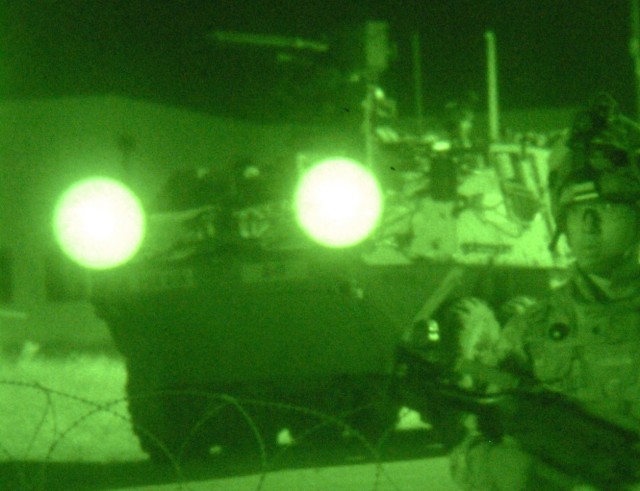
WASHINGTON (Army News Service, March 2, 2010) -- The Army released a request for proposal for the Ground Combat Vehicle Feb. 25 -- marking an official start for defense contractors to begin competing for the right to build the service's next combat vehicle.
Army Vice Chief of Staff Gen. Peter W. Chiarelli said the new vehicle will not be simply a rehash of the cancelled Future Combat Systems, but a relevant combat vehicle based on Army experiences in combat.
"This is a vehicle here that takes into account the lessons of eight years of war. It is not just FCS warmed over," said Chiarelli, during a video teleconference, Feb. 25, with attendees at the Association of the United States Army's Institute of Land Warfare Winter Symposium and Exposition in Fort Lauderdale, Fla.
The general said key performance parameters for the vehicle include, among other things, full-spectrum capability, net-readiness, and mobility. It should have the operational mobility of the Stryker and underbelly protection of the Mine Resistant Ambush Protected vehicle, or MRAP, according to the Brigade Combat Team Modernization Plan released Feb. 19.
Chiarelli said the Army is hoping for "three solid proposals" on the RFP -- those proposals must be in by April 26. The Army will then award technology development contracts to bidders in September -- marking milestone A in the GCV development process. Contract awardees will then enter the technology development phase that runs through December 2012.
Ultimately, Chiarelli said, the Army expects to award a low-rate initial production contract for the GCV by March 2016, and achieve initial operational capability in the second quarter of 2019.
Chiarelli said adaptability to the operational environment is key for the GCV.
"It will allow commanders to make a determination on what level of protection they need on that vehicle based on the enemy situation they find themselves in," he said.
Chiarelli also discussed the nature of America's enemies in Iraq and Afghanistan, countering claims they are less than capable adversaries.
"They are truly formidable adversaries," Chiarelli said. "But because they are not state-sponsored, many dismiss them as not being worthy opponents. There are those, and I'd argue too many, who somehow think because they are terrorists, they are not as capable opponents as we have fought in past conflicts."
The general also pointed out the enemy's adeptness at passing information to its lowest foot soldiers.
"The enemy is very, very good," Chiarelli said. "In fact, he has done a much better job, in some instances, in pushing information down to the tactical edge -- his tactical edge. He doesn't have the same security requirements that we do, in doing that. But he has been more than willing to push that information down, using technology."
The enemy's lack of information security, however, is a weakness that can be exploited by the Army, Chiarelli said.
"The fact that he lacks some of that security has in many ways allowed us to track him down," he said. "We end up catching or killing many of his fighters as a result. But he is willing to accept those losses."
The general also said the way the Army has operated has changed, as Soldiers at the farthest reaches of the battlefield are today providing as much information upstream to commanders as commanders are pushing information downstream. The change has resulted in a need to move decision-making responsibility closer to the Soldier.
"I believed you had a period (in the past) when decision making basically flowed from the top on down," he said. "Orders were given to the different levels of the chain of command. Today, we see as much information being passed up, from the edge, as we see being passed down from above. Whereas before we had decision making, very strict decision making, today, we have commanders who provide intent to Soldiers that are down on the edge."
Facilitating the faster, more secure flow of information is something Chiarelli said the Army is working on by developing its information network, including the "Everything over Internet Protocol" concept.

Social Sharing